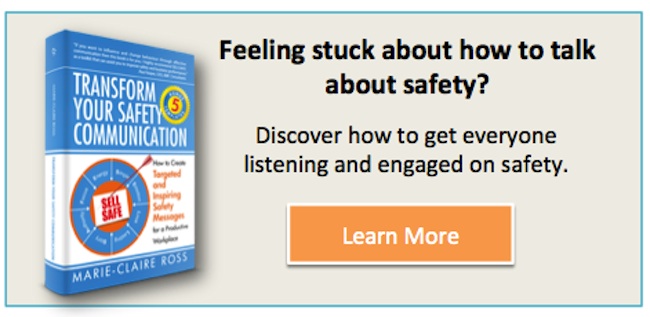As mentioned in " How to Develop a Workplace Safety Messages Campaign" Part 1, marketing is the key to getting your safety messages heard and understood.
10 Ways to Improve your Workplace Safety Communication
 Everything we do is communication. And it is no wonder that research studies point to 70% of workplace mistakes being caused by poor communication.
Everything we do is communication. And it is no wonder that research studies point to 70% of workplace mistakes being caused by poor communication.
How we start our message often determines the result.
According to Crystal Clear Communication, by Kris Cole, people quickly determine the meaning of our message and whether they will be receptive at the beginning. We only have a short time to get our messages across:
- 2 minutes when we are face to face
- 30 seconds on the telephone
- 10 - 15 seconds by voice mail.
So the more important the message, the bigger the need to plan what you are going to say.
The book, Transform Your Safety Communication, provides both safety and communication specialists with a range of tips and templates to improve engagement on safety. If you want to know more about improving safety communication, download a free chapter. Heres are 10 techniques:
- Start with explaining the current safety status. This can best be shown with a visual. In 1994, when the new CEO of IBM, Lou Gerstner was brought in to fix a troubled IBM, he put two charts on the wall to show how the market share had dramatically fallen. Until that point in time, IBM staff refused to believe IBM was in trouble (they lost $8 billion that year). A picture tells a thousand words. IBM-ers quickly saw the message.
- Customise your safety information. If your message involves talking at various sites. Talk about their individual safety records, not about the company as a whole
- Explain the benefits of the safety initiative Talk about the thinking behind it and how it will effect staff, their family and the company. For example, you can let people know how much you expect a new training program will contribute to a reduction in injuries and the consequences of that.
- Get people involved with your message. If you are talking to a group of people, get people actively involved. Ask them questions. Get them to do a demonstration of how they are lifting with an expert there to point out how they can improve and what potential damage they could be doing to their bodies. Another idea is to ask workers where they believe the new safety posters can be best placed. What other strategies can you think of to get people to help with disseminating your message?
- Repeat your message via different communication methods over a period of time. Use posters, video content, email newsletters, and letters from the GM. Put together a schedule of communication events that constantly drip-feeds your message.
- Tell stories. The right brain prefers story. It also provides an emotional connection to information that people will remember. What real-life workplace stories can you use that show the importance of safety?
- Reward in public, condemn in private. Recognise high performing safety leaders or change leaders publicly. This will encourage others to work more safely. For those that are not doing the right thing, this needs to be done privately.
- Use positive language. Avoid words like 'don't' and can't. Focus on the behaviour you want, rather than talking about what you don't want.
- Expectation Clarity. Let everyone know what it is expected of them and how you will be measuring it. Clearly set goals and targets.
- Follow up with Action. While workers might accept your words, they will want to see action that you believe what you say. Keep communicating with them and checking on their progress. Remember, the old adage "Actions speak louder than words".
What else would you add to this list?

